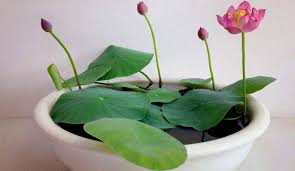Royal Walls and Murals: The Majestic Art of Royal Residences
Throughout history, royal walls and murals have been a fundamental part of the grandeur of royal residences. These stunning works of art were not only decorative but often served as symbols of power, wealth, and cultural significance. The intricate designs, elaborate motifs, and historical narratives found on royal walls and murals reveal much about the time periods in which they were created, the monarchs who commissioned them, and the societies that revered them.
In this article, we will explore the history, significance, and artistic value of royal walls and murals. We will also look at their impact on architecture, the methods used to create them, and how they have influenced modern interior design. From the majestic frescoes in Renaissance palaces to the ornate murals adorning the walls of palatial estates in the Far East, royal murals tell fascinating stories that transcend time.
1. The History and Significance of Royal Walls and Murals
The tradition of using murals and wall decorations in royal palaces dates back thousands of years. Ancient civilizations understood the importance of public art as a form of expression, communication, and power. Walls, especially those in the homes of the elite and royal families, were often covered with murals that conveyed the achievements of their rulers, the beauty of their cultures, and the religious or mythological stories they held dear.
- Ancient Egypt: The use of murals in ancient Egypt is one of the earliest examples of this tradition. The walls of royal tombs and temples were adorned with paintings that told the stories of the deceased pharaoh’s life and their journey into the afterlife. These murals were both spiritual and political, symbolizing the divine rule of the pharaohs.
- Ancient Rome and Greece: Roman villas often boasted walls decorated with frescoes, a medium that would go on to influence European art for centuries. Greek palaces, too, showcased murals that depicted gods, heroes, and royal victories. These murals not only served to honor deities but also to remind the viewer of the divine connection between the ruler and the gods.
- The Renaissance: During the Renaissance period in Europe, the art of mural painting reached its zenith. Royal courts in Italy, France, and Spain became the epicenter of artistic innovation, with painters like Michelangelo, Raphael, and Leonardo da Vinci creating monumental frescoes on the walls of palaces, chapels, and royal halls. These murals were often used to tell stories from mythology, history, and religion, while also showcasing the power and sophistication of the monarch.
- The Far East: In Asia, particularly in China, Japan, and Korea, murals also played an essential role in royal spaces. Imperial palaces were often decorated with paintings that reflected Confucian values, the natural world, and scenes from Chinese mythology. The intricate artwork on royal walls was designed to elevate the status of the emperor and reaffirm his divine rule.
2. The Artistic Techniques Behind Royal Murals
Creating royal murals was an elaborate process that involved highly skilled artists and craftsmen. The methods used to create these murals evolved over time, but certain techniques remained consistent across cultures.
- Fresco Technique: The fresco technique, in which pigments are applied onto freshly laid wet plaster, was widely used in Renaissance Europe. This method allowed the colors to become a permanent part of the wall, ensuring the mural would last for centuries. Notable examples include the Sistine Chapel ceiling painted by Michelangelo and Raphael’s frescoes in the Vatican.
- Mosaic Walls: In ancient Rome, mosaics were frequently used to decorate royal walls. These intricate works were made from tiny, colored stones or glass that were arranged to form detailed images. The use of mosaics allowed for durable, vibrant depictions that could withstand the test of time.
- Ink and Brushwork: In East Asia, murals were often created using delicate brushstrokes on silk or paper. In China, wall murals were painted with detailed ink designs and bright pigments, depicting scenes from daily life, nature, and folklore. These murals were characterized by their subtlety and precision.
- Stucco and Reliefs: In ancient Rome and later in Renaissance Italy, stucco and relief work were used in conjunction with murals to add texture and depth to the artwork. These sculptural elements created an interactive experience, making the murals appear three-dimensional.
3. Themes Depicted in Royal Murals
Royal murals often served a dual purpose: they were both decorative and symbolic. The themes depicted in these artworks were not random but carefully chosen to reflect the ruler’s power, beliefs, and aspirations.
- Divine Right and Religion: One of the most common themes in royal murals is the connection between the monarch and the divine. This was particularly prominent in European, Egyptian, and Asian art. Rulers were often depicted as gods or with divine attributes to demonstrate their legitimacy and reinforce their absolute power.
- Mythology and Legends: Murals also frequently told stories from mythology or royal legends. In the Renaissance, many of the frescoes in royal palaces depicted stories from classical Greek and Roman mythology, while in the East, murals would often feature gods and legends unique to local culture. These stories were meant to educate and inspire the viewer.
- Historical Achievements: In many cases, royal murals were used to commemorate significant events, such as military victories, royal marriages, or the construction of monumental buildings. For example, the walls of the Palace of Versailles in France showcase various scenes of Louis XIV’s reign, including his wars and his efforts to establish absolute monarchy.
- Nature and Opulence: In addition to religious and historical themes, royal murals often depicted nature in all its grandeur. This was especially true in the Far East, where emperors commissioned murals of landscapes, animals, and the changing seasons. These murals often symbolized the harmony between the emperor and nature, portraying the ruler as a steward of the earth.
4. The Impact of Royal Walls and Murals on Architecture
Royal murals were integral to the architecture of royal residences. They transformed plain walls into works of art that conveyed a message of power, culture, and beauty. These murals were often commissioned as part of a larger architectural plan, with the murals complementing the overall design of the palace or estate.
- Integration with Architecture: In Renaissance palaces, for instance, the murals were integrated into the architecture, with ceilings, walls, and floors all working together to create a unified artistic experience. In the case of the Sistine Chapel, Michelangelo’s frescoes on the ceiling blended seamlessly with the chapel’s Gothic architecture, creating a harmonious space that elevated the divine.
- Use of Light and Space: Artists often took advantage of architectural elements like windows, arches, and columns to enhance the effects of their murals. In some cases, murals were designed to interact with natural light, which would change the way the murals looked at different times of the day.
5. Royal Murals in Modern Design
Today, the legacy of royal walls and murals continues to influence modern design. While fewer palaces and royal residences commission large-scale murals, the impact of these historical artworks can be seen in luxury homes, hotels, and modern palaces.
- Restoration and Preservation: Many of the world’s most famous murals, such as those in the Vatican and the Palace of Versailles, have been meticulously restored to preserve their historical and artistic value. The techniques and materials used to create these murals have influenced contemporary artists, architects, and interior designers.
- Luxury Interiors: In the world of high-end interior design, murals are often used to create a dramatic focal point in large living spaces. Modern mural artists draw inspiration from the royal murals of the past, incorporating classical themes, vibrant colors, and intricate details into contemporary spaces.
- Cultural and Historical Influence: Royal murals continue to inspire cultural events, exhibitions, and public art projects. Their historical significance and artistic brilliance make them a source of fascination for modern audiences, leading to a revival of interest in the techniques and stories they depict.
Conclusion
Royal walls and murals are more than just decorative elements of royal palaces—they are windows into the past, offering a glimpse into the culture, beliefs, and values of past societies. From ancient Egypt to Renaissance Italy, from imperial China to modern luxury homes, these murals have stood the test of time, continuing to inspire and captivate audiences with their beauty and significance. They remind us of the lasting power of art and architecture in shaping the world around us. Whether in grand palaces or modern interiors, royal murals will continue to be a testament to the timeless allure of history and creativity.


